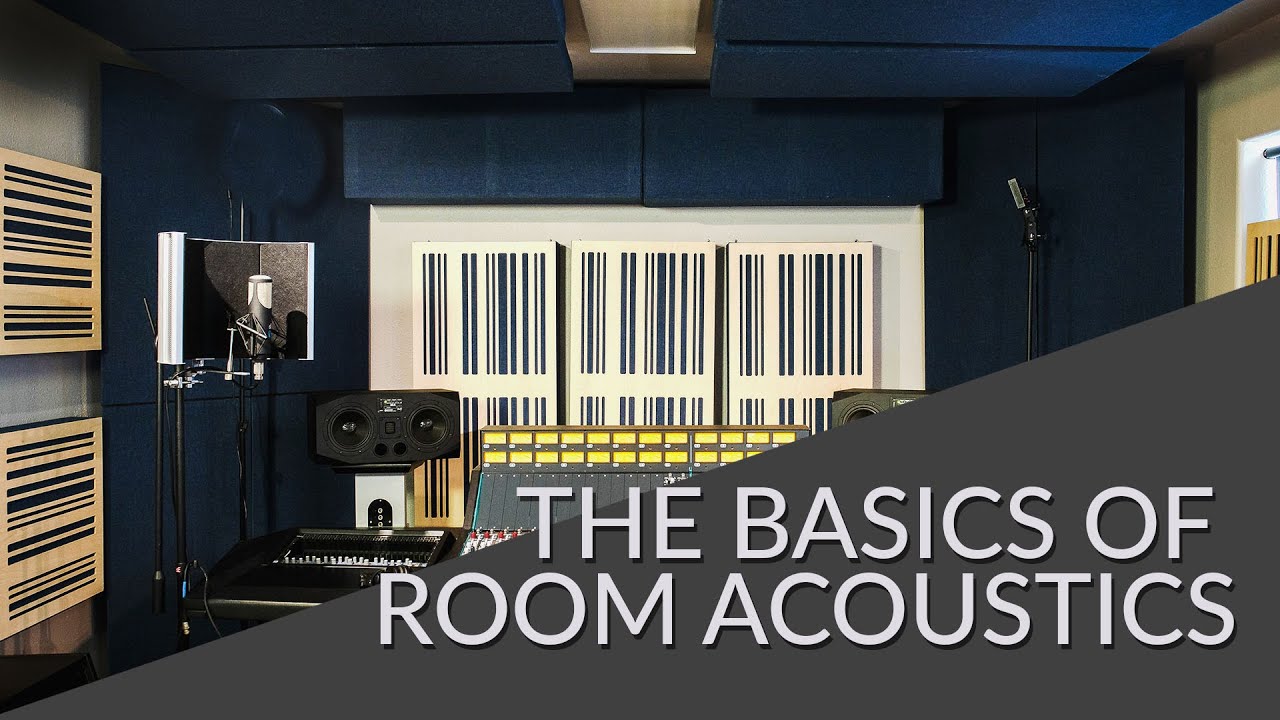This video outlines some of the key concepts and strategies related to room acoustics.
Related video – How to Set Up First Reflections.
A dedicated studio that’s designed and built from the ground up for sound will often have custom acoustic treatments built-in to the room design, but many people looking to set up a home studio, listening room or home theater start with an existing room. Maybe you’ve got a spare bedroom or a finished room in your basement you’re looking to convert into a mixing room.
The rooms that typically get converted into studios are usually on the smaller side. These smaller rooms cause large peaks and nulls as certain frequencies build up or cancel themselves out.
Sound waves, like all waves, have peaks and troughs. When two waves interact, their respective peaks and troughs get combined depending on the “phase” of the wave. If the exact same sound wave is 180 degrees out of phase so that the troughs of one wave line up with the peaks of the other you get what’s called phase cancellation.
In-phase waves add together and produce peaks, and out-of-phase waves cancel each other out and produce nulls. This gets very complex very quickly because there are always many more than two sound waves interacting in this way, producing peaks and nulls that make it harder to hear accurately.
Most of these problems will occur in the lower frequencies as bass tones have longer decay times. The longer the decay time the more these frequencies build up and interfere with each other. This is why treating your corners and first reflections with thick Panels is always a great first step when treating your room.
At GIK, we typically treat these areas with absorption material 2 – 6 inches thick. Absorption is great here because it converts the energy from the sound wave to a very small amount of heat as the air collides with the panel. This eliminates the sound from the room and keeps the unwanted frequencies from reflecting and building up into peaks and nulls.
Ever notice that bass instruments tend to be big? Just like how you need a large instrument to produce a bass note, you need a large thick absorption in order to treat the lower frequencies, because the wavelength is physically larger.
Thick, broadband bass traps should always do most of the heavy lifting in the bass strategy, but we can fine-tune the response with GIK’s patented technologies. Range Limiters let us maximize bass absorption without overdamping the treble, and tuned Scopus bass traps are useful to clean up any stubborn resonances that remain even after a full complement of broadband or range-limited bass traps is in place.
Another option for room treatment is diffusion. Unlike absorption, the purpose of diffusion is to scatter sound evenly in all directions. When sound hits a flat surface it reflects off at the opposite angle just like a light beam off a mirror. By using an acoustically reflective material such as wood, we can make treatment with ridges and depressions so that the sound striking the panel reflects off in all directions.
There are different methods we can use to create diffusion instead of reflections, both with GIK’s dedicated diffusors and with hybrid devices that provide diffusion, absorption, and bass trapping all in one.
This strategy can also help with evening out your frequency response by scattering sound evenly around the room. Diffusion has the added benefit of changing a room’s characteristics to give the impression of a larger space, and can be useful where too much absorption may make a room sound dead.
Great sound in small rooms for audio production is all about balance, and the best rooms have a great bass response and a neutral overall character that won’t color or mask the sound. Production spaces like this allow you to work faster, with less frustration, with better sounding results.
GIK Acoustics has a very wide range of effective, affordable products to achieve these goals. Be sure to contact us for free acoustic advice so we can help you get the best possible sound for your room and your budget.

Share:
Understanding Diffusion and how to use it in your room
Setting Up an Isolation Booth for Recording